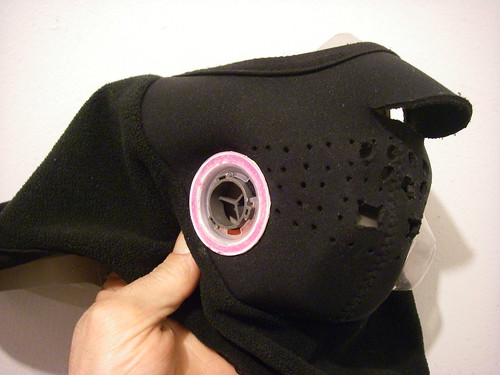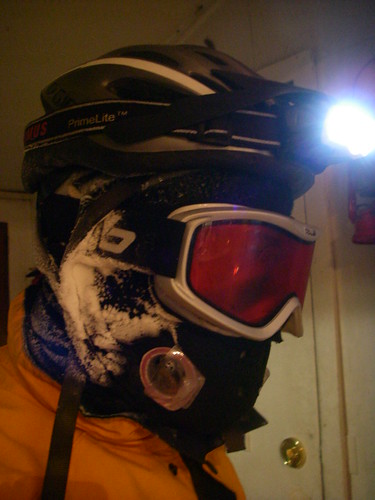Originally Posted by
erig007
Except that the facemask on his pics is not the best against fog. I have had one like this for a while before throwing it away (doesn't allow a good seal around the nose)
IME, and from reading numerous posts on the subject, there are three basic methods for preventing fogging, caused by exhaled moist air onto the cold surface of the eyeglasses and goggles:
- Provide ventilation for the exhaled air, as described in my post; an advantage to the exhaled air is that it keeps the face warm.
Originally Posted by
Jim from Boston
….The goggles allow sufficient room for my prescription eyeglasses, and are widely ventilated to carry away the exhaled moisture preventing fogging… When the going fast on windswept downhill runs of about a few hundred yards, I raised my face mask to below my nose. The warm, moist exhaled air kept my exposed nose and cheeks warm, and the onrushing air dissipated the moisture before it could fog up the goggles. With a slightly forced exhalation, I could even warm my eyebrows, with no fogging.
I realize now that my goggles and face mask are actually an integrated system of heating and ventilation that keeps my face warm and my vision unencumbered by fogging. The windscreen of the goggles is so effective in keeping my eyes warm that my eyelids actually perspired because my central core body was so warm, and my eyes never got cold, even on those fast windswept downhill runs.
- Prevent the exhaled air from reaching the goggles:
Originally Posted by
erig007
Try the techno mask. It has 2 things necessary for this to work : something that allow you to tightening up at will at the nose area and also at the back of the head.
Plus you get an "anti pollution" mask…
I have tried typical, and expensive, double-paned ski goggles, and it seems difficult to keep that exhaled air from entering the seal, especially when forcefully exhaling as when riding uphill. If moisture does get into the tightly sealeld goggles, it can’t get out.
It seems a tight headband would also be uncomfortable. An added benefit to safety glasses is I can mount my Take-a-Look mirror on the rigid earpieces.
- Antifogging agents, like Cat Crap, soap, spit etc.: I find that when exhaling forcefully, and colder temperatures, say under 20° F, those agents can be overcome. That’s why I suggest
Originally Posted by
Jim from Boston
…that any recommendations for winter riding include description of the conditions in which they are employed, i.e. lowest temperature and distance.
I’m not trying to be contrarian about any methods used, but I
am zealous because fogging is a difficult and dangerous challenge to winter riding, and would keep me off the bike for about 3 to 4 months during the year. Every year there are many threads on about the problem.
FYA, I was most impressed by this system by @
TuckamoreDew of Edmonton, AB:
Originally Posted by
TuckamoreDew
Last year was my first year cycling through the winter and at very low temperatures I constantly struggled with problem of fogging glasses. This year I'm using a combination of a neoprene mask and a half-mask respirator and so far I've been able to ride at -32C with zero fogging. On the first test runs, on the coldest days, I experienced a slight fogging of my glasses inside my goggles but the dishwashing soap trick has taken care of that. It is such a relief to not have to worry about losing visibility during my commute.
I have posted more details
here if anyone is interested.


